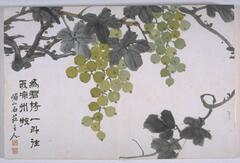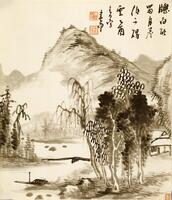52 UMMA Objects
52 UMMA Objects
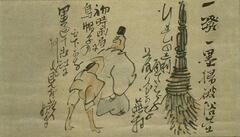
Yosa Buson (Japanese (culture or style))
Broom, Poems, and Poets
18th century
Museum purchase made possible by the Margaret Watson Parker Art Collection Fund
1969/2.24
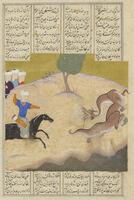
Iranian (Iranian)
Bahram Gur Slays a Dragon, from the Shahnama of Firdausi
1455 – 1465
Museum Purchase
1963/1.70

Nakagawa Tenju
One of a Pair of Calligraphy Scrolls in Running Script
1726 – 1795
Gift of Dr. Jack Dodick in memory of Morris Gitter
1977/1.187
![A round water dropper in the shape of a curled fish. There are two holes, one located in the middle, near the tail fin, and the other near the head on the dorsal fin. The fish is a white and cobalt blue color.<br />
<br />
This is a carp-shaped water dropper produced within the vicinity of Bunwon-ri, Gwangju-si, and Yeoju-si area in Gyeonggi-do in the late 19th century. Its upper surface features a realistic carp design in relief and entirely colored with cobalt blue. Such animal-shaped vessels are simple in form, but they were esteemed by many for their auspicious meaning. The base is flat, wide, and stained by ink.<br />
[Korean Collection, University of Michigan Museum of Art (2014) p.184] A round water dropper in the shape of a curled fish. There are two holes, one located in the middle, near the tail fin, and the other near the head on the dorsal fin. The fish is a white and cobalt blue color.<br />
<br />
This is a carp-shaped water dropper produced within the vicinity of Bunwon-ri, Gwangju-si, and Yeoju-si area in Gyeonggi-do in the late 19th century. Its upper surface features a realistic carp design in relief and entirely colored with cobalt blue. Such animal-shaped vessels are simple in form, but they were esteemed by many for their auspicious meaning. The base is flat, wide, and stained by ink.<br />
[Korean Collection, University of Michigan Museum of Art (2014) p.184]](/media/W1siZiIsIjIwMjIvMDkvMjQvNDI4bnhsZWJzcF9kZWZhdWx0LmpwZyJdLFsicCIsInRodW1iIiwiMjQweDIwMCJdXQ?sha=526177d522caf151)
Korean (Korean (culture or style))
Blue-and-White Water Dropper in the Shape of a Fish
1867 – 1899
Gift of Bruce and Inta Hasenkamp and Museum purchase made possible by Elder and Mrs. Sang-Yong Nam
2004/1.286
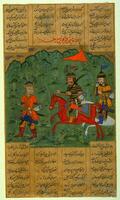
Iranian (Iranian)
Faramurz taken Prisoner, Shah-nameh of Ferdowski
17th century
Gift of Dr. Richard Ettinghausen presented in honor of Professor Oleg Grabar
1965/1.180
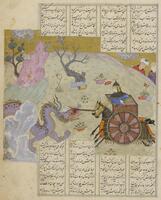
Iranian (Iranian)
Asfandiyar Slays a Dragon, from the Shahnama of Firdausi
1455 – 1465
Museum purchase
1963/1.61

Yamaoka Geppō
Blue and Green Landscape, with inscription by Murase Kôtei
1767 – 1832
Museum purchase made possible by the Margaret Watson Parker Art Collection Fund
1985/2.24

Fujimoto Tetsuseki (Tesseki)
Autumn Retreat amidst Mountains and Valleys
1862
Museum purchase made possible by the Margaret Watson Parker Art Collection Fund
1968/2.20
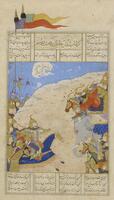
Iranian (Iranian)
Rustam Takes Prisoner the Khan of China, from the Shahnama of Firdausi
1455 – 1465
Museum Purchase
1963/1.52
Loading…
